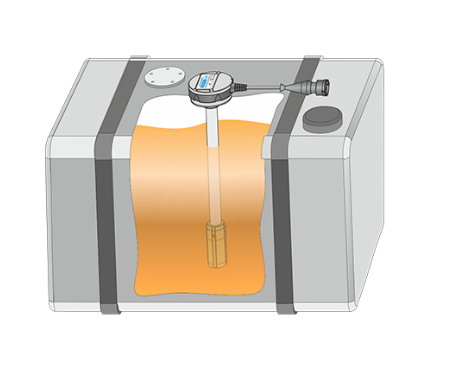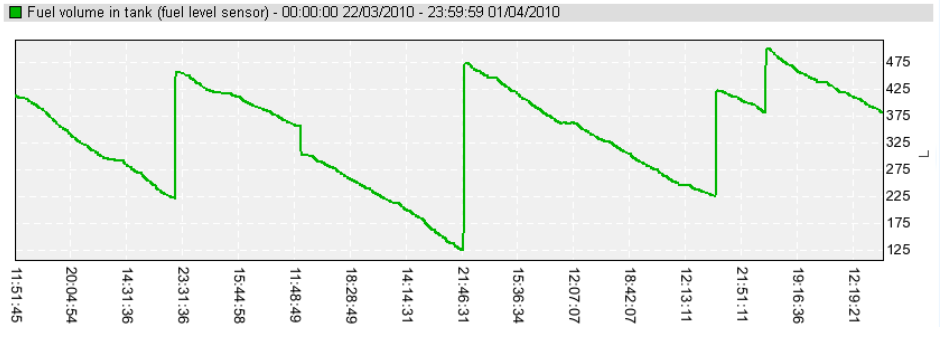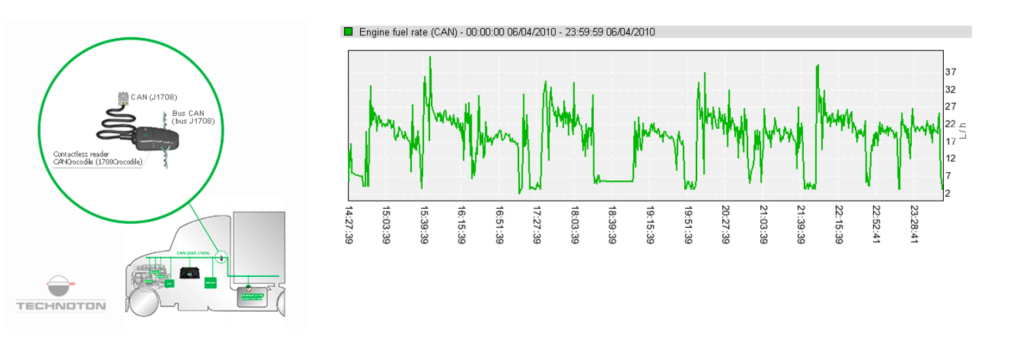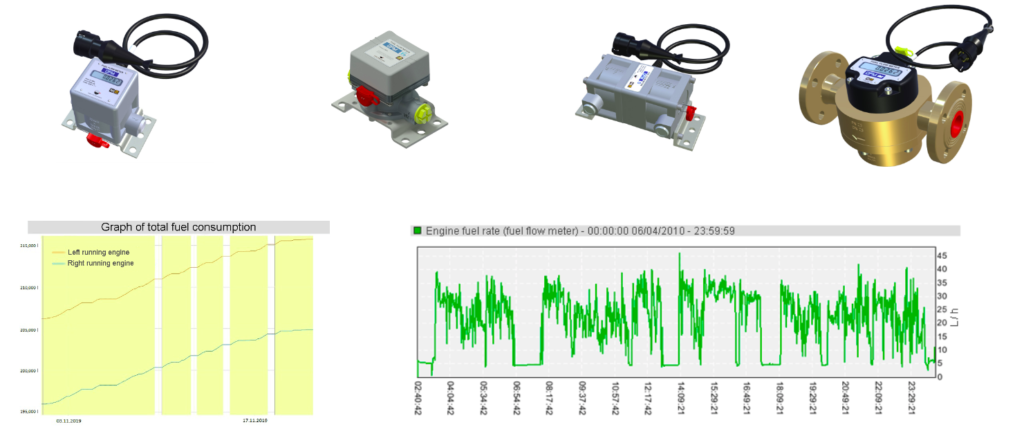Fuel and other Liquid Management Systems
Monitoring of fuel consumption in fuel line of engine has a number of undeniable advantages – this method of fuel control provides measurement accuracy regardless of operating conditions of vehicles, allows to monitor fuel consumption in various modes of engine operation, helps to keep track of operating time and link fuel consumption to engine hours.
Measurement of actual fuel consumption is mainly beneficial for heavy equipment: oil & gas extraction machines, mining equipment, railway, river & marine vessels, construction equipment, agricultural machinery, as well as stationary objects – diesel power plants, diesel generator sets, boilers etc
3 benefits of direct fuel consumption measurement

Fuel consumption monitoring
Fuel consumption monitoring for vehicles and stationary objects allows a machinery-owner or fleet operator to solve a number of tasks:
- Optimizing machinery operation modes
- Engine hours and machinery downtime monitoring
- Recalculation of fuel consumption quotas
- Fuel theft prevention
- Prediction of maintenance date
To achieve optimal operating mode of vehicles:
- a driver can select resource-saving operation mode of engine by using RPM and fuel rate data;
- a mechanic can monitor fuel consumption information using online telematics system, remotely supervise technical condition of engine and fuel system, schedule technical maintenance taking into account real operating conditions of the equipment.
Almost any fleet owner faces fuel theft during vehicle or stationary machinery operation. The highest percentage of fuel misuse occurs with construction, agricultural and other machines, where fuel is accounted according to engine hours. Fuel tank draining, underfilling fuel in a tank, fraud with cash vouchers and fuel cards are the most common methods of fuel theft. They can be eliminated by introducing fuel consumption monitoring system.
Ways of fuel consumption monitoring
1. Fuel consumption monitoring by detecting fuel level and volume change in a fuel tank
This method uses data from additional fuel level sensor, which measures current fuel level in a tank, and detects fuel tank filling-ups and fuel draining volumes.


Disadvantages of fuel consumption control using level sensor:
- Relatively low accuracy, especially in flat-shape fuel tanks
- Impossibility to measure fuel consumption during short operation periods, when fuel volume is not changing distinctly
- Hard to measure slow fuel draining from tank and impossible to detect fuel theft from return fuel line
- Not applicable for machinery operated in rough terrain, quarries, mines where fuel in tank fluctuates noticeably
Advantages of fuel consumption measurement using fuel tank data:
- Relatively low price
- No intervention into engine fuel supply system
- Fuel tank refilling and fuel draining volumes can be measured
2. Fuel consumption data from CAN J1939 bus
This method uses ECU data, which is available in CAN J1939 bus or J1708. CAN bus data is based on calculation algorithms applied by engine manufacturer and uses a predefined constant of fuel injection volume and measured duration of opening nozzles.

Disadvantages of using CANbus data for fuel consumption measurement:
- Low accuracy – indirect fuel control method (uses calculation method)
- Data can be “hidden” by engine manufacturer, i.e. inaccessible for reading
- Data can be erratic, corrupted or missing – typical for older vehicles
Advantages of fuel consumption control using CAN J1939 data:
- Low cost of data reading equipment
- Ease connection to CANbus and J1708 bus
3. Fuel consumption monitoring by measuring fuel flow rate in engine’s fuel lines
This method differs from all others in that measurement of real fuel consumption is carried out, because flow meter is installed in the fuel line of engine.

Disadvantages
- Fuel flow sensor installation requires time and sufficient qualification of installation specialist
- Installation costs are higher than for other fuel consumption control methods
Advantages
- High accuracy of fuel rate measurement
- Fuel consumption is correctly measured even for short operation periods
- Applicable for off-road (also railroad and water) vehicles, rough terrain has no influence on measurement accuracy
- Helps to follow fuel system’s and engine’s health, allows implementing predictive technical maintenance
Add a compelling title for your section to engage your audience.
Review Average!